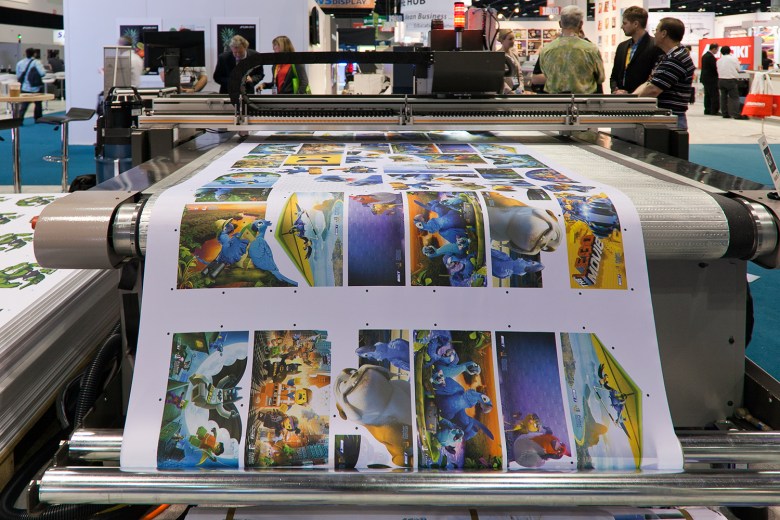
Profound prophesies and flowery forecasts have been hallmarks of those who espouse digital print technology since the sector jumped the shark from copiers to full colour ‘presses’ following the introduction of the Indigo E-Print and Xeikon in 1993, HP’s massive R&D spend after acquiring Indigo in 2001 and the roll-out of high volume, full colour digital web presses starting with Screen’s Truepress 520 in 2006.
Add to this the tremendous advances made in ‘wide format’ where flatbed inkjet methods are now producing POS displays, short-run packaging and decorated products, with roll printers moving into textiles and home décor, supplanting screen process and pad printing.
Indigo’s founder Benny Landa, now Chairman of Landa Nanography, famously predicted that all printing that can be digital, will be digital by 2005. Some mistakenly took this to mean there would be no offset, flexo or gravure but Landa saw that there was a great deal of inefficient use of offset in the SRA3 sheet sector and the evidence is that, in developed markets, almost all SRA3 full colour work is performed digitally.
While with Landa, it is worth noting that the company has booked its stand at drupa 2020 and is recruiting dozens of technical and support staff across Europe. The product range has slimmed down to the S10 B1 sheetfed press and W10 1050mm wide web press, both available as perfectors. It looks like we can expect another stellar display from the master showman in June 2020, Düsseldorf.
The B2 sheetfed sector has proven more resilient to digital change, with only the HP Indigo 10000 and 12000 making any significant inroads. Fujifilm’s JetPress 720 inkjet B2 press has made useful inroads in Europe, with around 100 installed, but no sales in ANZ and it is slower, stuck in CMYK only mode whereas the 12000 now offers seven colours for extended gamut. There are however at least two of Konica Minolta’s Accuriojet KM-1 sheetfed inkjet UV presses installed in Australia and these have a slightly larger than B2 sheet size of 750 x 585mm – the extra 45mm depth on a 29” press can come in handy for bleeds.
Before digital’s battle for the B2 sheetfed sector has been won, B1 digital presses are beginning to creep into the market. Out in front like wunderhorse Winx at Flemington, is Landa again, with several S10s installed at beta sites and an increasing head of steam in the build-up to drupa 2020. Not to be outdone having abandoned its joint development project with Landa, is Heidelberg with its Primefire 106 inkjet packaging press. One reference installation exists at Multi Packaging, Germany but the Primfire still appears to be in pilot stage.
Which leaves digital web, or continuous-feed. If we include narrow web, this sector has done very well in the transactional/direct-mail, label and book printing markets. Labels printing with both inkjet and toner-base digital has blitzed new flexo press sales to the point that new installs are 3:1 in digital’s favour. However, to be fair, many of these are hybrid converting lines where a flexo unit often precedes the digital workings and other processes such as foiling, coating, die-cutting, matrix stripping and embossing are non-digital. Control, however, is invariably digital – as is workflow.
At Hunkeler Innovation days this February in Switzerland, both Screen and Ricoh showed digital web presses claiming to print on offset stocks at offset quality. This is a significant development since the major barriers to mainstream adoption of digital web for commercial colour quality have been the necessity to use special coated stocks or primers, and the lack of real saturation in colour.
To answer the rhetorical question of the title: in my view, no, digital has not reached its limitations and probably never will. Perhaps toner digital might struggle to go much faster but with the way markets are moving to short runs and variable content, this may not matter.
Having said that, we should not forget that highly automated data-driven offset presses still account for the lion’s share of world print so long as variable data is not required. Cost-per-impression is still lower than digital but by accepting short runs and with 3-minute job make-readies; offset can begin to emulate the higher profits of digital and escape the ‘race to the bottom’ mentality.
Comment below to have your say on this story.
If you have a news story or tip-off, get in touch at editorial@sprinter.com.au.
Sign up to the Sprinter newsletter
